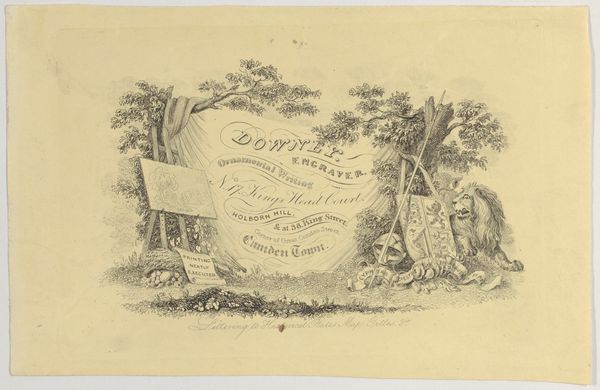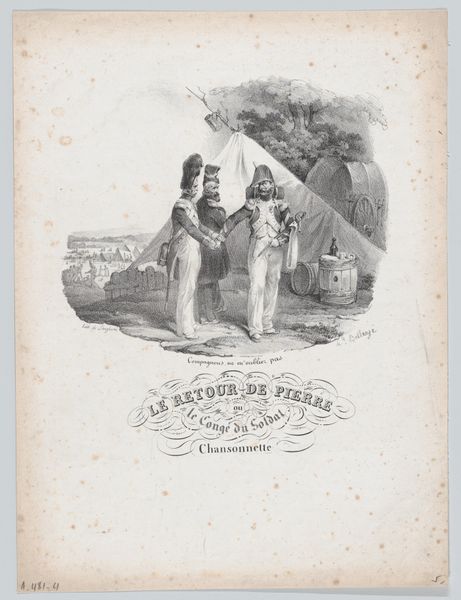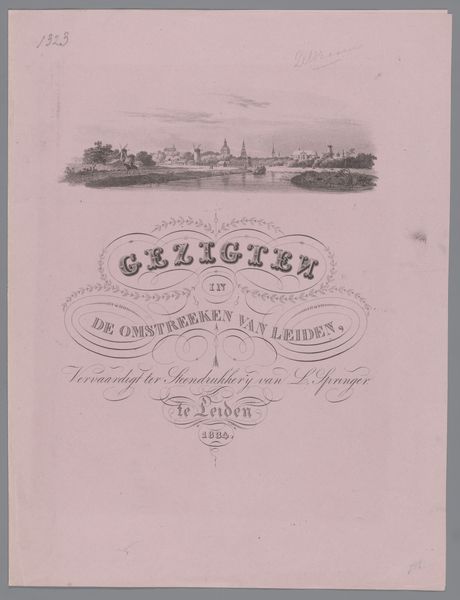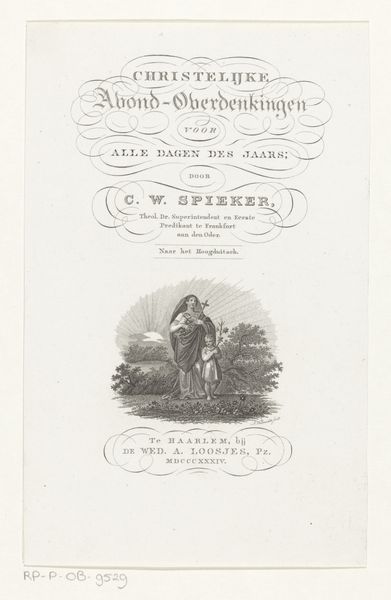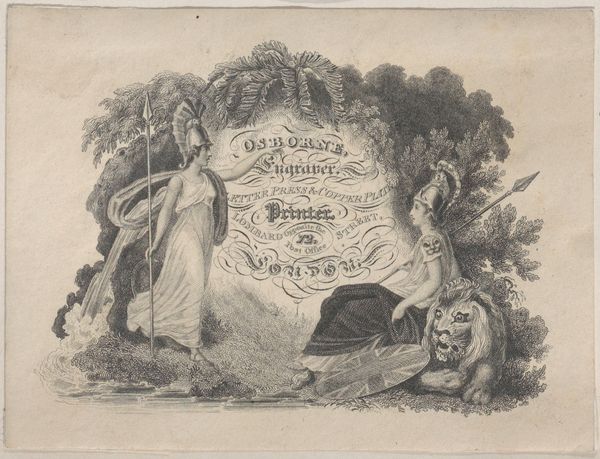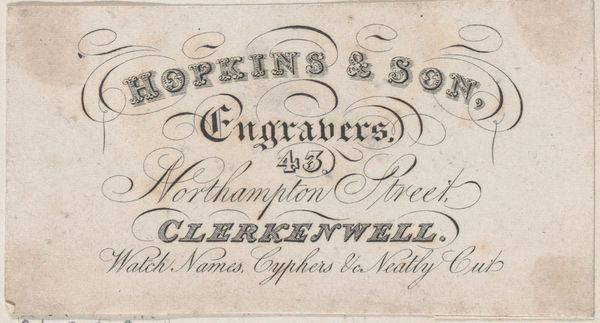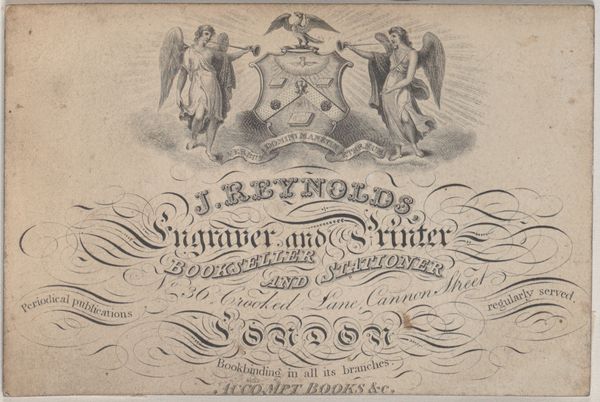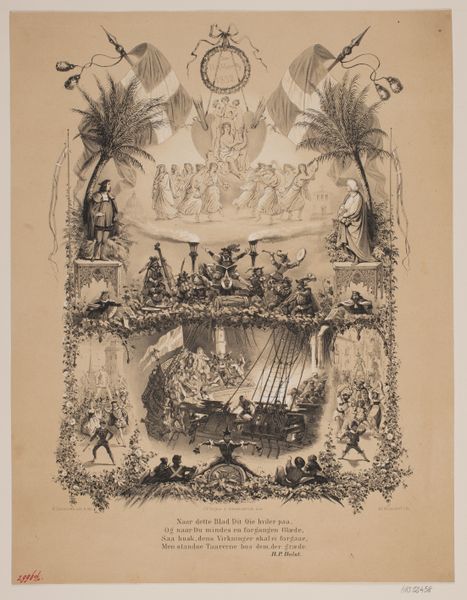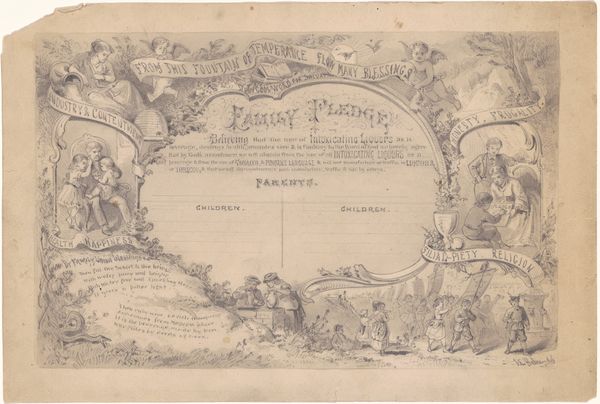
Trade Card for C.P. Johnson, Seal and Copper Plate Engraver 1800 - 1900
0:00
0:00
drawing, graphic-art, print, engraving
#
drawing
#
graphic-art
# print
#
landscape
#
engraving
Dimensions: Sheet: 2 3/8 × 3 9/16 in. (6.1 × 9.1 cm)
Copyright: Public Domain
Curator: Let's consider this trade card for C.P. Johnson, a seal and copper plate engraver, created sometime between 1800 and 1900. It's part of the Metropolitan Museum's collection. Editor: My first impression is… whimsical. It's a miniature stage set of Romantic-era emblems and imagery. A little cherub here, classical ruins over there—a distinct layering of elements across the plane. Curator: The composition is divided into quadrants by the stylized landscape elements: notice how the groupings of trees on the left contrast with the ruin perched atop the hill on the right? Even the typography reflects a sense of considered balance across the format. Editor: And it reads almost like a coded announcement, a constellation of signifiers for wealth and taste. We have a figure evoking classical myth next to what appears to be a document, sealed, maybe alluding to their clientele’s needs for verification or status symbols. The overall feeling is one of understated luxury, presented through idealized scenes. Curator: That resonates with the engraving technique, which permits a high level of detail, as you can see with the rendering of light and shadow in the trees, producing tonal contrast against a generally pale ground. It is designed, of course, to suggest refinement via precise visual execution and expert control over line quality. Editor: Precisely, this isn't simply advertising; it's visual propaganda, carefully constructed with recognizable images. A suggestion of history, nature, even literacy—represented by the casually placed open book to the left. And this particular set of images, the ruined temple, recalls concepts like Romantic ruin or even the idealizing landscapes of a place like the Cotswolds near where Johnson’s business was located. Curator: Indeed. Even the flourishes of the text mimic and supplement the image; see the looping extensions, almost vegetative. Editor: Right, the font and the landscape support each other and echo ideals through text and image—that is how visual language persists as cultural narrative. Curator: In short, the visual arrangement acts as a careful construction that goes to the heart of its purpose to telegraph status and social ideals. Editor: It’s an insightful and compact demonstration of how commercial artistry embodies not just utility, but embedded layers of societal aspiration.
Comments
No comments
Be the first to comment and join the conversation on the ultimate creative platform.
